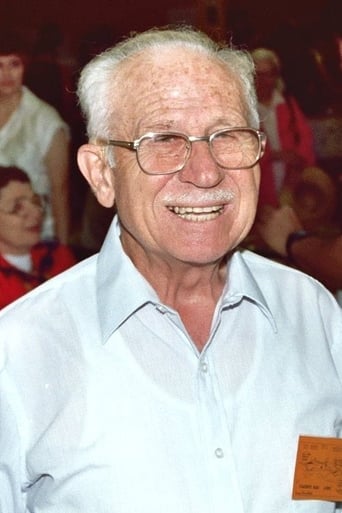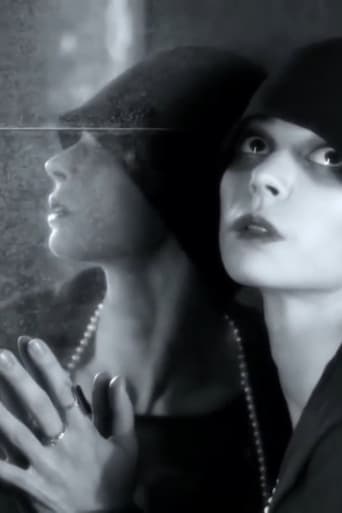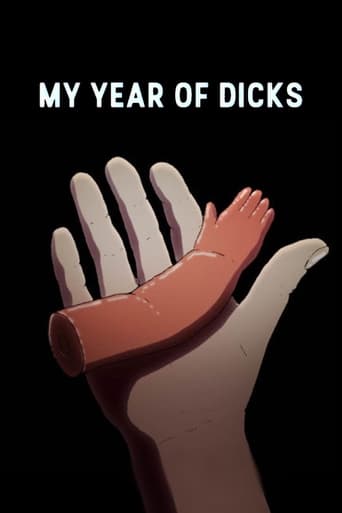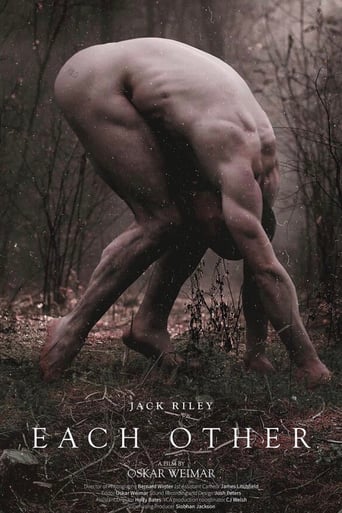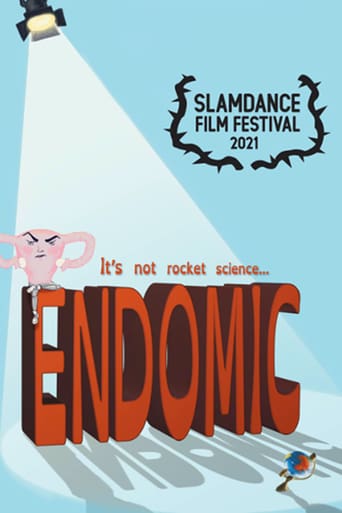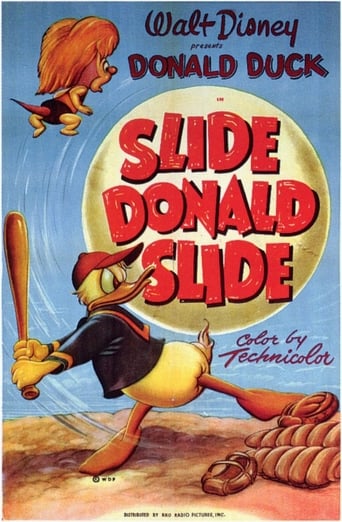
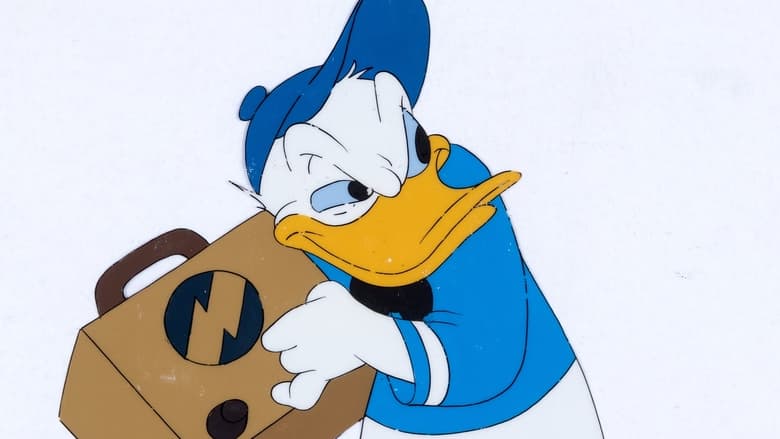
Slide Donald Slide (1949)
Baseball fan and would be-star Donald Duck enjoys listening to a World Series game on the radio and 'playing' the part of his favorite star Casey in his own yard. Unfortunately a melomanic apis melifera (Latin for honeybee) is as avid to listen on the same radio to a mellifluous symphony and play the director theatrically, waving a match as baton, instead of fertilizing his garden flowers. Donald first just turns the switch, then hides it, but the bee dials inside, so he tries to chase it, but is scared by the sting. The battle for channel choice gets worse, and vindictive.
Watch Trailer
Cast


Similar titles
Reviews
I knew Donald was going to "lose" in this cartoon short. He was dealing with the bee who pretended he was conducting a symphony while listening to the radio over Donald's insistence of listening to the Yankee's game. But, Donald did manage to reprimand the annoying bee on a few occasions, including setting off a dynamite near him. Grade C
In fact, one of my favourites actually. The animation is bright and colourful with no jerky movements or blocky character designs. Also with the merging of the radio commentary and Donald and the bee's movements there are some really clever moments visually too. Coming from a lifelong classical music enthusiast, I found the music to be a real delight, the choices were well-chosen and sounded lively and beautiful. Donald is as temperamental and funny as ever, and the bee is an excellent foil with priceless facial expressions. The gags are hilarious, especially the one with the fake radio and dynamite. Donald getting locked in the shower is a scene where it is amusing but also where you do feel sorry for Donald at the same time. The story moves quickly and is told in a fresh way. Clarence Nash's voice work as Donald is spot-on as always.All in all, truly excellent short that succeeds in being colourful and hilarious fun. 10/10 Bethany Cox
"Buzz-Buzz" is enjoying a sunny afternoon in Donald Duck's garden, listening to classical music, when Donald enters with a newspaper proclaiming something about The World Series. The moment he switches the radio to his series game, the battle begins.SLIDE DONALD SLIDE is another in a series of Donald "B" films, and it's amusing in every way. The stubborn bee keeps switching Donald's baseball game to music, which of course makes Donald see red. The bee even goes so far as to enter the inside of the radio to make some adjustments that bring the music back on. He's such a cleverly animated bee that he almost steals the show from Donald.Donald's every attempt to re-enter the garden has the bee getting his stinger ready, forcing the duck to retreat. Finally, he plays a dirty trick with a fake radio that has the bee doing a slow burn. Still, while he's showering, the bee finds the real radio again and conducts the music with so much vigor that he's almost exhausted by the time a symphony is over and Donald has another fit.Amusing stuff with some very clever animation as the radio commentator's description of the game matches Donald's and the bee's movements in the garden.
A Walt Disney DONALD DUCK Cartoon.Donald & Buzz-Buzz have an energetic disagreement over what should be playing on the patio radio - the World Series or classical music.SLIDE DONALD SLIDE was one of a small number of cartoons which showcased the struggle between the Duck & the Bee and is fairly typical of the lot - fast moving and quite funny. The maestro Buzz-Buzz is imitating is most likely Leopold Stokowski, who was a major collaborator with Walt Disney in the creation FANTASIA (1940). Clarence Nash provided Donald with his unique voice.Walt Disney (1901-1966) was always intrigued by pictures & drawings. As a lad in Marceline, Missouri, he sketched farm animals on scraps of paper; later, as an ambulance driver in France during the First World War, he drew comic figures on the sides of his vehicle. Back in Kansas City, along with artist Ub Iwerks, Walt developed a primitive animation studio that provided animated commercials and tiny cartoons for the local movie theaters. Always the innovator, his ALICE IN CARTOONLAND series broke ground in placing a live figure in a cartoon universe. Business reversals sent Disney & Iwerks to Hollywood in 1923, where Walt's older brother Roy became his lifelong business manager & counselor. When a mildly successful series with Oswald The Lucky Rabbit was snatched away by the distributor, the character of Mickey Mouse sprung into Walt's imagination, ensuring Disney's immortality. The happy arrival of sound technology made Mickey's screen debut, STEAMBOAT WILLIE (1928), a tremendous audience success with its use of synchronized music. The SILLY SYMPHONIES soon appeared, and Walt's growing crew of marvelously talented animators were quickly conquering new territory with full color, illusions of depth and radical advancements in personality development, an arena in which Walt's genius was unbeatable. Mickey's feisty, naughty behavior had captured millions of fans, but he was soon to be joined by other animated companions: temperamental Donald Duck, intellectually-challenged Goofy and energetic Pluto. All this was in preparation for Walt's grandest dream - feature length animated films. Against a blizzard of doomsayers, Walt persevered and over the next decades delighted children of all ages with the adventures of Snow White, Pinocchio, Dumbo, Bambi & Peter Pan. Walt never forgot that his fortunes were all started by a mouse, or that childlike simplicity of message and lots of hard work always pay off.


